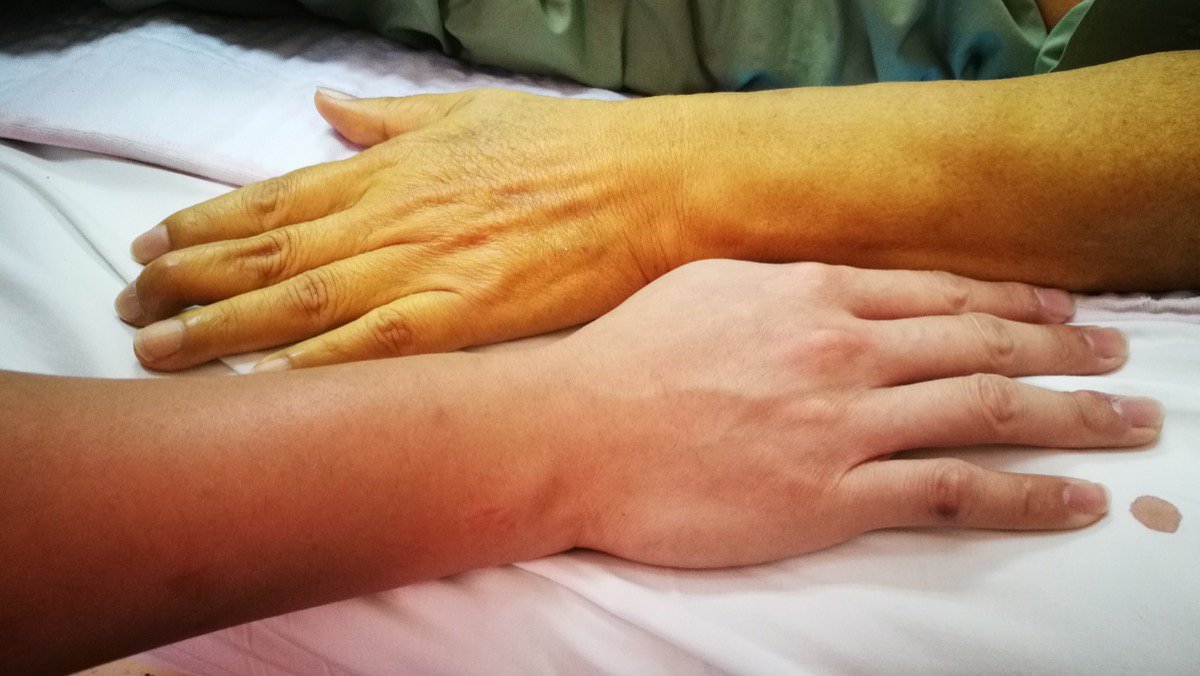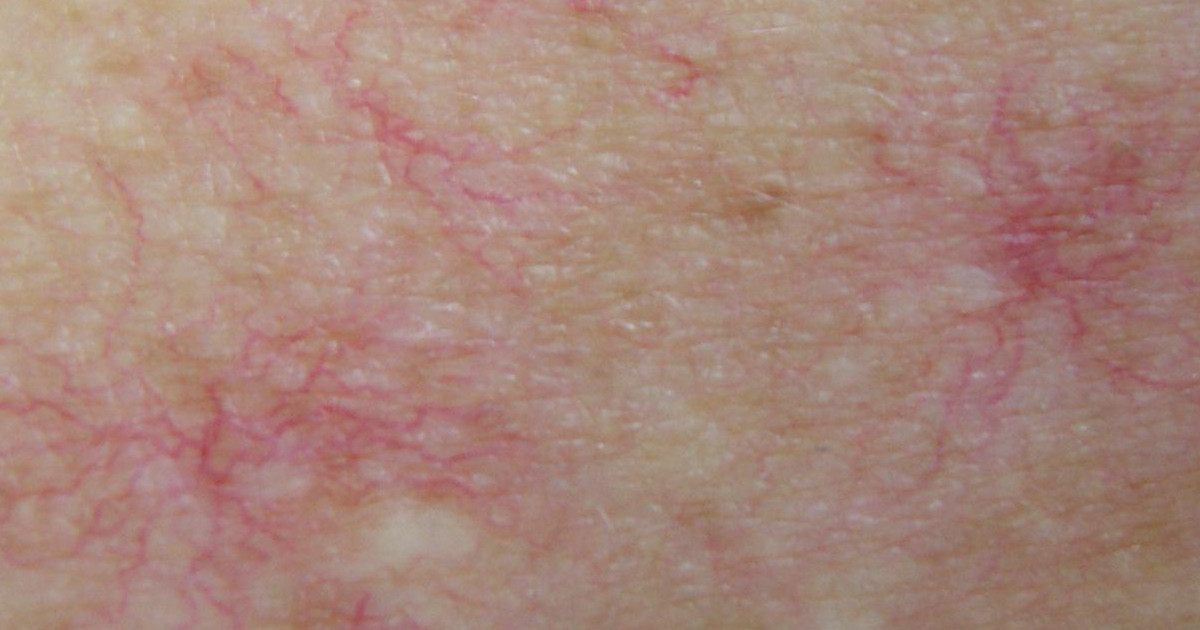Major Symptoms Of Hepatitis C
Hepatitis is a liver disease caused when the hepatitis C virus begins to attack. Some individuals become infected and completely recover, whereas others develop chronic hepatitis C, which often leads to cirrhosis and several other serious complications, including liver failure. Known as a 'silent' disease, symptoms do not often appear until significant damage has occurred. During the initial acute phase, patients may not experience any symptoms at all, however, shortly after the virus attacks, there are a few key signs to be aware of. Once liver damage has occurred, this is generally when more major symptoms develop.
Poor Appetite

Of course, a lack of appetite can be caused by a wide range of factors, including stress and imbalanced hormonal levels. With that being said, when experiencing significant changes to digestion, it's important to take notice. A healthy liver plays a key role in digestion, as bile production is key. In some cases, the liver will not produce enough albumin, a substance that helps regulate the amount of fluid in cells, resulting in a loss of appetite as well as nausea. These symptoms may also occur right after being infected, as individuals often experience flu-like symptoms for a few weeks, including a fever.
Jaundice

In severe cases, liver damage (including damage due to hepatitis C) is often associated with jaundice, which is the yellowing of skin and eyes. Although changes in skin, hair, and nail health may be due to poor hemoglobin function, bilirubin is a key concern. This is a substance found in hemoglobin and when the liver is not functioning properly, levels start to accumulate, resulting in the yellow coloration associated with jaundice. When bilirubin builds, changes in the skin aren't the main area of concern. When this occurs, red blood cells, as well as several organs are immediately at risk. In fact, both urine and stool samples can tell a lot about an individual's condition as urine may be dark and stools become lighter in color.
Chronic Fatigue

Fatigue is defined as feeling a lack of energy or persistent extreme tiredness even when adequate sleep (e.g. eight hours a night) is achieved. It is quite different than feeling tired after tossing and turning throughout the night or only getting four hours. Although many individuals seek medical advice due to chronic fatigue, which is often due to lack of hydration, this symptom may also indicate hepatitis C. It's suggested that approximately fifty to seventy percent of hepatitis C patients experience some form of chronic fatigue. Although more research needs to be conducted, researchers believe fatigue stems from the body trying to fight the infection. That said, other studies suggest fatigue is due to liver damage.
Muscle And Joint Pain

In many cases, muscle and joint pain are the primary reason individuals seek medical help before being diagnosed with hepatitis C. For some, this joint pain is caused by cryoglobulins, which are antibodies the body makes when responding to an infection. This often leads to further inflammation and joint pain. When cryoglobulins are to blame, individuals generally experience red or purple blotching in their skin as well.
Although rarer, approximately four percent of hepatitis C patients develop arthritis. Classified into two groups, affected patients develop either polyarthritis or mono-oligoarthritis. Polyarthritis is much like rheumatoid arthritis, but is typically less serious. Mono-oligoarthritis targets medium to large joints, especially within the ankles.
Cognitive Issues

A highly disabling symptom of hepatitis C is brain fog, as well as other cognitive complications. Affecting around thirty-three percent of all patients, hepatitis C can cause issues regarding a patient's memory and ability to concentrate. Put simply, this disease causes a breakdown in neural pathways, reducing the brain's ability to send signals. More specifically, signals between the prefrontal cortex and basal ganglia. In turn, poor cognitive performance is experienced. Another key reason why brain fog occurs is due to the liver's reduced ability to eliminate toxins. Meaning, these toxins circulate throughout the body, affecting organs such as the brain. This is generally experienced during the advanced stages of hepatitis C, known as hepatic encephalopathy. Other associated symptoms include shaky hands, slurred speech, changes in personality, and lack of coordination.
Ascites

Ascites is a term used to describe when an individual experiences an abnormal accumulation of fluid in the area between their abdominal wall lining and the abdominal organs. Hepatitis C causes liver tissues to become inflamed, swollen, and scarred. The swelling and accumulated scar tissues in the liver causes portal hypertension, which is high blood pressure in the veins that carry blood through the liver. The high blood pressure in the portal veins forces excess fluid in the blood volume to seep through the affected individual's blood vessel walls. This excess fluid causes the patient to experience abdominal swelling or bloating. Ascites has often been described as making a patient appear as if they are pregnant regardless of their gender or age. An affected individual may notice they are putting on an excessive amount of weight and may not fit into their clothes properly.
Dark Urine

A healthy individual has urine that is a straw-yellow color and is transparent with no cloudiness. An individual who has hepatitis C may experience jaundice, where the scar tissue that has accumulated in the liver tissues stops the proper flow of bile to the gallbladder and small intestine. When the bile cannot move through these structures properly, bilirubin cannot be broken down by the body naturally. Bilirubin, which has a strong odor and potent yellow pigment, is essential for the proper digestion of fats. Bilirubin can accumulate in the blood of an affected individual when it cannot be excreted through stool. The kidneys filter the blood that contains the excess bilirubin, and this substance ends up in the patient's urine. The yellow-brown pigmentation of bilirubin is what causes an affected individual to experience dark-colored urine.
Easy Bruising And Bleeding

When the liver is no longer able to filter blood properly due to the accumulation of scar tissue from hepatitis C, blood backs up into the spleen. The spleen hogs a large amount of platelets, which are responsible for helping the blood clot properly. In addition, hepatitis C can cause a decrease in the number of platelets an individual's liver and spleen can produce when needed. This platelet hoarding and decrease in production can cause an overall shortage of platelets in an affected individual's blood. The displacement of blood in the spleen can also cause imbalances in the number of clotting factors or special proteins in the blood that are also responsible for helping form clots. When blood is not able to clot properly due to deficiency of platelets or clotting factors, any injured blood vessels will bleed for extended periods. Externally, this excessive bleeding can manifest as nosebleeds or bleeding gums. Internally, the excessive bleeding can manifest as large and frequent bruising as blood accumulates just underneath the skin of the affected area.
Spider Angiomas

Spider angiomas describe when blood vessels appear underneath an individual's skin and take on a spider-like appearance. This blood vessel arrangement usually resembles a red dot with small lines that extend in an outward fashion from the center, like spider legs. Spider angiomas common in women of older ages due to fluctuations in estrogen. Individuals affected by hepatitis C tend to experience an abnormal spike in blood estrogen levels, which is thought to trigger the formation of spider angiomas in some cases. The most prevalent parts of an individual's body where spider angiomas develop are in the face, hands, ears, forearms, near the cheekbones, and on the upper chest wall. Spider angiomas tend to fade as an individual's estrogen levels normalize with treatment, while others may need to be removed with the use of laser therapy.
Leg Swelling

Leg swelling involves an accumulation of fluid in the legs. This swelling is thought to occur in individuals affected by hepatitis C because they have hypertension in some major veins and arteries in the body, which cause excess fluid to leak from the vessel walls. The natural physical force of gravity causes the excess fluid that has leaked into the extracellular spaces in the tissue to move downward toward an affected individual's legs and feet. This excess fluid causes the legs and feet to take on a puffy or swollen appearance. These swollen parts of an affected individual's body tend to have skin that becomes stretched and has a shiny appearance. Pitts or dimples may also appear in the skin of an individual who has edema in their legs and or feet. Edema can be distinguished from other causes of swelling by placing a finger on the affected skin and checking to see if a dimple or pit remains when the finger is removed.
